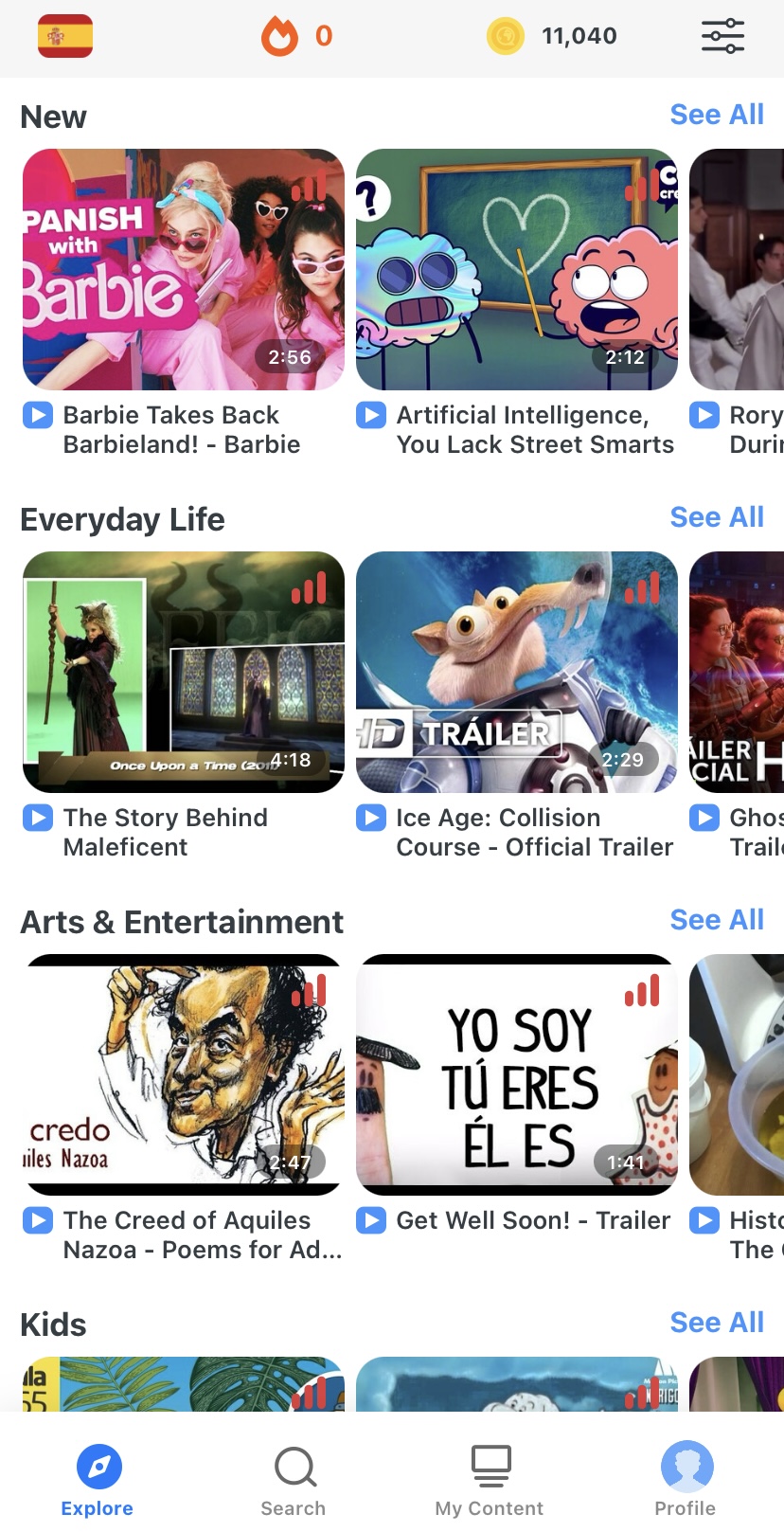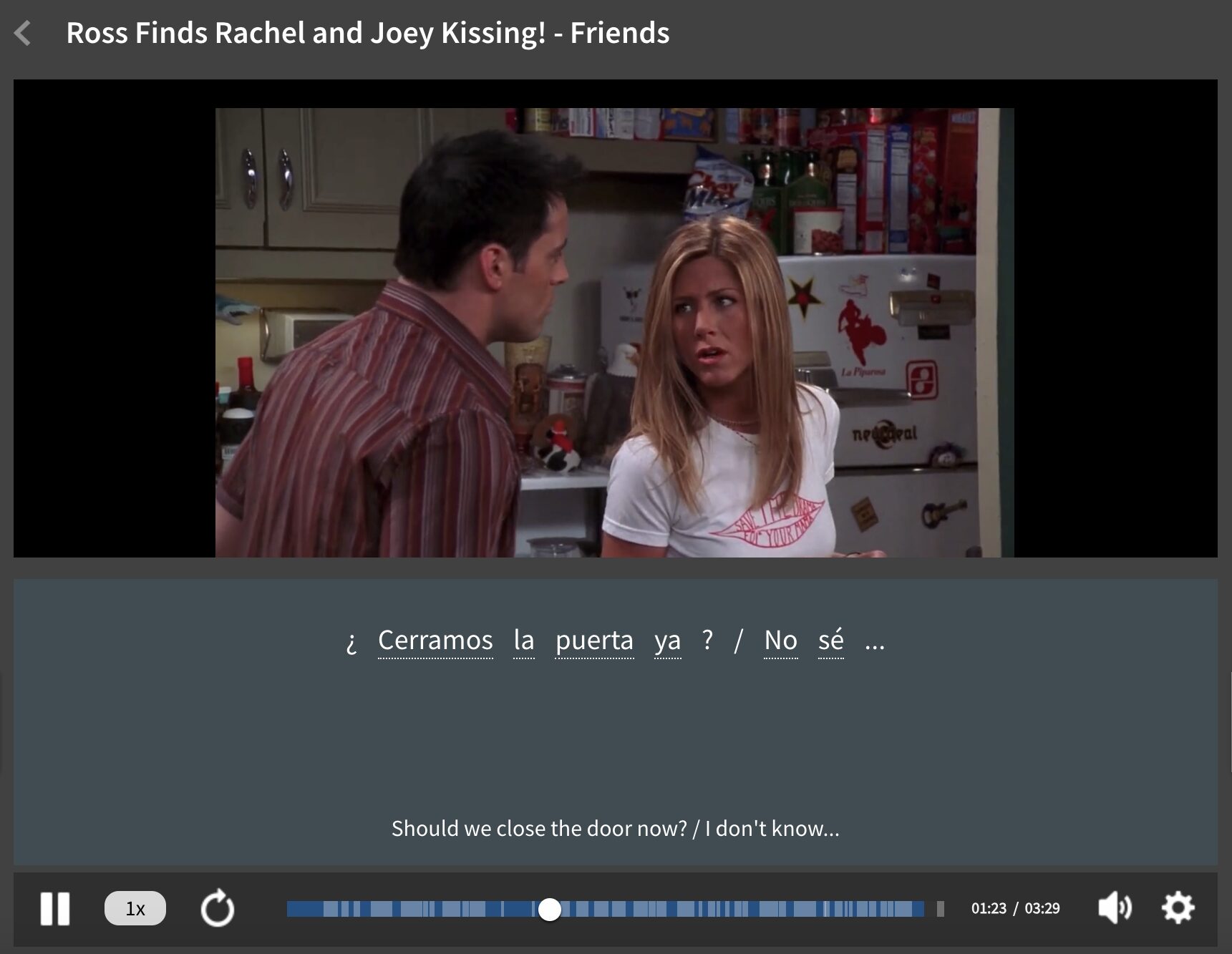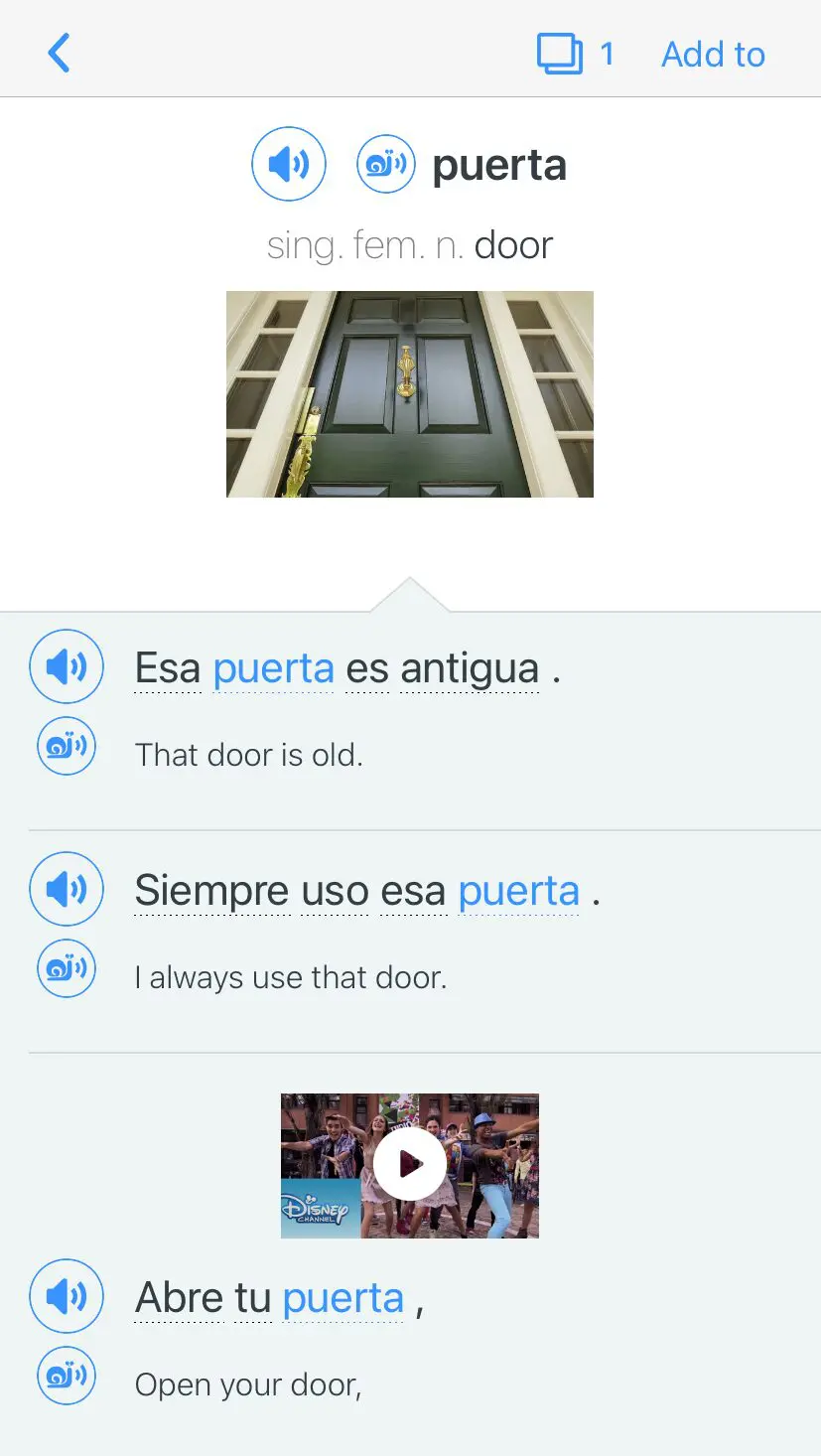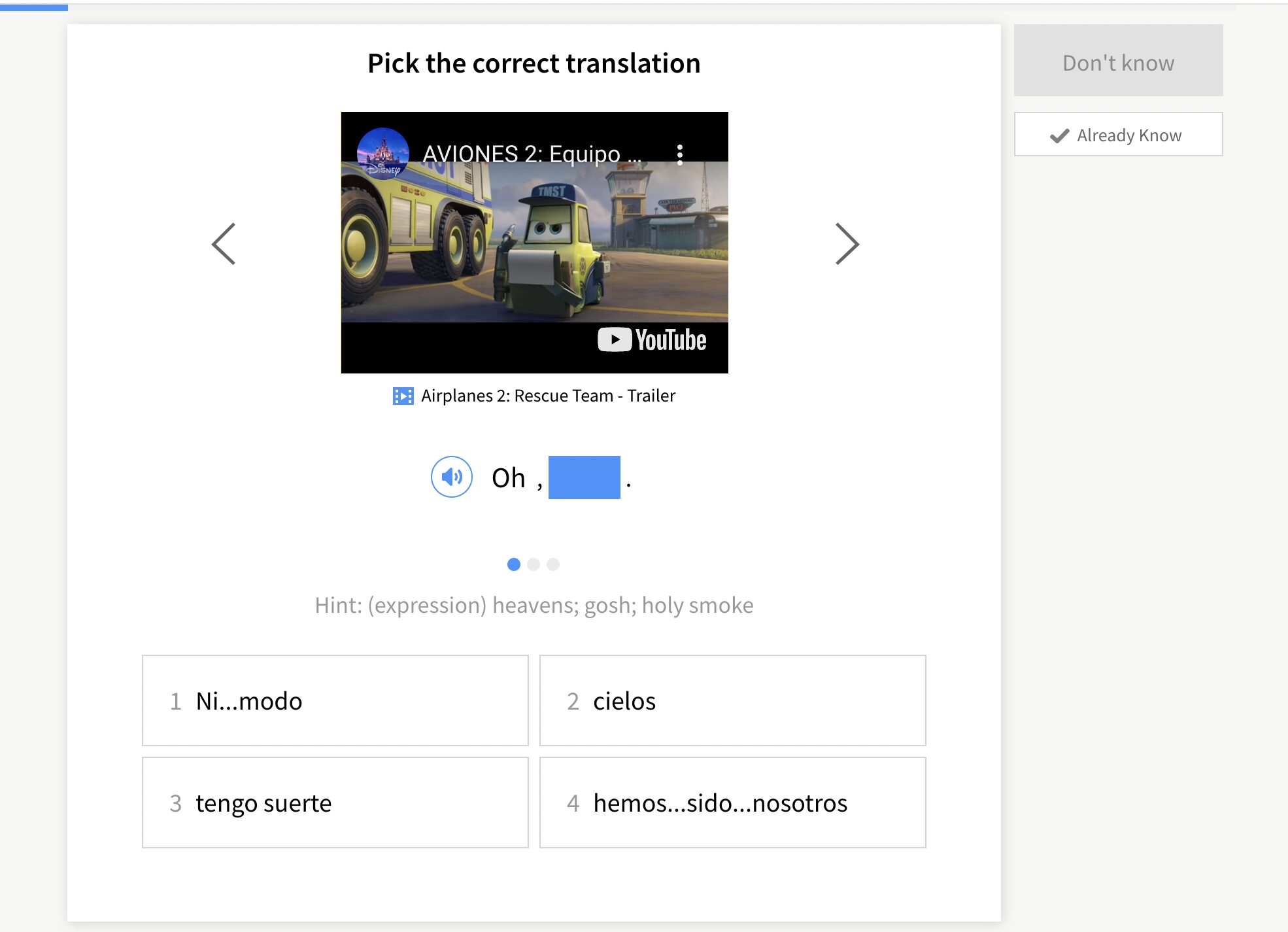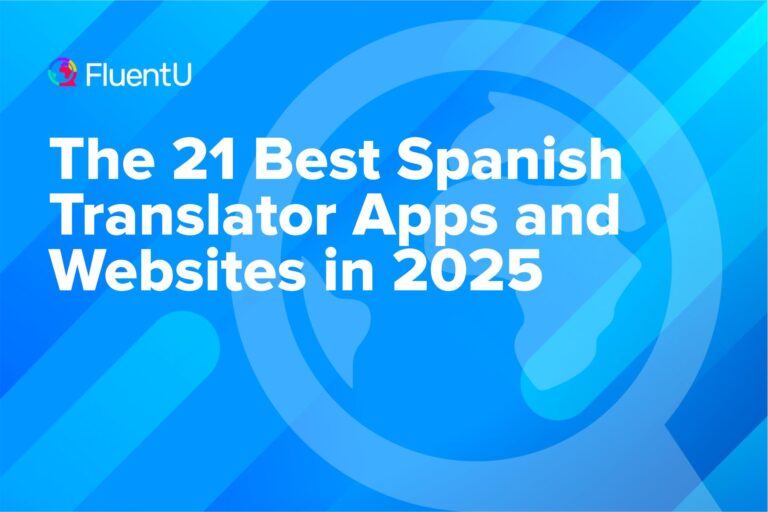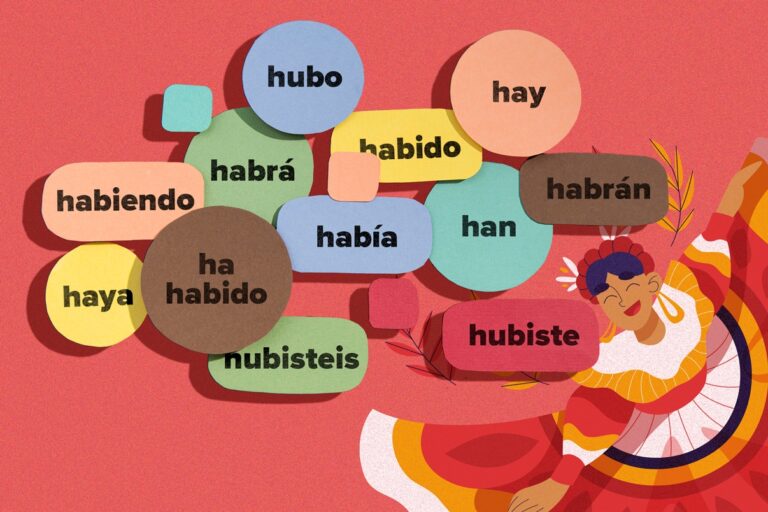Contents
- 1. Master the Spanish Alphabet
- 2. Learn High-frequency Spanish Vocabulary and Phrases
- 3. Get Down the Spanish Cognates
- 4. Learn Key Spanish Verbs
- 4. Figure Out Spanish Articles, Gender Rules and Plurals
- 5. Pay Attention to Accentuation Rules and Accent Marks
- 7. Learn Personal Pronouns
- 8. Get Into Spanish Culture and Language Varieties
- 9. Get to Know Word Order and Sentence Building
- 10. Get Down the Spanish Present Tense
- 11. Then Master the Spanish Present Progressive Tense
- 12. Learn Relative Spanish Relative Pronouns
- 13. Get Down Spanish Verb Negation
- 14. Move On to Irregular Spanish Verbs
- 15. Learn the Spanish Imperfect and Preterite Tenses
- 16. Master the Spanish Conditional Tense
- 17. Start Doing Spanish Commands
- 18. Understand Por Versus Para
- 19. Know How to Use Direct and Indirect Object Pronouns
- 20. Work on the Spanish Subjunctive
- And One More Thing…
Our 20 Favorite Tips for Learning Spanish Fast

Did you know there are 572 million Spanish speakers worldwide? And this number is expected to grow to over 750 million by the year 2060. There are 21 countries around the world where Spanish is an official language.
What I am trying to say here is that learning Spanish is pretty important, and a really good idea.
If you’ve been on the fence about learning Spanish, don’t hesitate—you will be tapping into a tremendously influential and beautiful language.
In this post, we’ll show you the 20 most essential tips for learning Spanish fast.
The tips below are listed in the suggested order you should tackle each task. While you can follow the sections in any order you like, remember that the list has been carefully planned for maximum efficiency so that you progress faster!
Download: This blog post is available as a convenient and portable PDF that you can take anywhere. Click here to get a copy. (Download)
1. Master the Spanish Alphabet
It may seem obvious, but the first thing you have to do when starting to learn a new language is to study its alphabet, plus learn the letters’ different sounds.
You will realize that there are letters in Spanish that English does not have (like ñ or ll). Likewise, there are letters that English uses like there is no tomorrow but Spanish tends to avoid (k and w are the best examples).
You can use this first step as a starting point to learn the correct pronunciation of single words, which will certainly help you later in your journey.
Here’s a simple video that goes over each letter and sound:
2. Learn High-frequency Spanish Vocabulary and Phrases
By building vocabulary before you begin studying tenses and learning grammar concepts, you are ensuring that you will have enough words to work with when you are ready to begin building sentences.
Whether you use an app to learn new daily words or you learn them in chunks, it is a good idea to learn new words by themes. You can even try children’s dictionaries or Spanish apps for kids!
Keep it simple, focusing initially on commonly used words and simple phrases, and work your way up to more complicated topics.
Here are a few vocabulary lists to get you started, which include more in-depth vocabulary for later on in your Spanish learning journey:
- Basic greetings
- Numbers and telling the time
- The days of the week and the months of the year
- Daily routines
- The weather
- Adjectives
- Colors
- Food
- Fruits
- Animals
- Travel and transportation
- Saying thank you
- Asking how are you
- Body parts
Every learner has to go through a beginning phase where there are quite a lot of topics that need to be learned in order to start taking their first steps by themselves.
The words you learn should be useful to you. There is no point in learning Spanish words if you would never use them in your life!
Check out this great video to learn some excellent beginner phrases:
3. Get Down the Spanish Cognates
A cognate is a word that sounds and means the same in two languages. And there are a lot of cognates in Spanish and English.
You already know much more Spanish vocabulary than you could have ever imagined! Once you know what cognates are, you will start seeing them everywhere!
Here’s a few of the most common Spanish/English cognates to get you started:
- Actor — Actor
- Animal — Animal
- Café — Coffee
- Capital — Capital
- Doctor — Doctor
- Elefante — Elephant
- Familia — Family
- Hotel — Hotel
- Idea — Idea
- Información — Information
- Música — Music
- Nacional — National
- Opción — Option
- Problema — Problem
- Televisión — Television
- Universidad — University
After seeing all the words you already know, it starts to seem less scary, right? Check out this video if you want to learn even more cognates:
4. Learn Key Spanish Verbs
You can now start learning the most important Spanish verbs. This is the point at which you are no longer learning isolated words—with the help of a few verbs, you will be able to start forming sentences.
Ser, estar (both meaning “to be”) are the best way to break the ice. By learning these three grammar monsters, you will be able to talk about yourself and what surrounds you.
Here’s an informative video on ser versus estar:
4. Figure Out Spanish Articles, Gender Rules and Plurals
English has three articles (“a,” “an,” “the”), but Spanish has eight!
Every new noun you study should have a corresponding article. They tend to give learners a headache in later phases if they have not studied them at the beginning. So learn them now! For example, learn it as el coche (the car), not just coche.
Spanish articles go hand-in-hand with gender and number (whether something is singular or plural), two of the easiest but also most important topics you need to cover while warming up.
By learning these two concepts, you will understand that each Spanish noun and adjective has a specific gender and number and you will begin to get a sense of how important these are to constructing sentences.
Dive deeper into Spanish gender rules here:
Gender Rules in Spanish (Plus Examples) | FluentU Spanish Blog
Gender in Spanish is one of the first grammar topics beginners learn, but it can be one of the most challenging to fully master. Click here to learn 9 Spanish gender…
5. Pay Attention to Accentuation Rules and Accent Marks
If you have ever seen written Spanish, you probably noticed that some of the letters have little accent marks above them. These are crucial if you want to read Spanish words properly.
By learning a couple of accentuation rules, you will know how to read and spell Spanish words correctly!
To learn more about Spanish accents, check out this post:
Spanish Accent Rules (With Examples) | FluentU Spanish Blog
Knowing the rules of accent marks in Spanish will improve your pronunciation, fluency, accent and more. Click here to learn everything about Spanish accent marks, plus…
7. Learn Personal Pronouns
Pronouns are an important component to every language. You are already able to say “a car” in Spanish, but what if you want to talk about “this” or “that” car, or maybe “your” car?
Personal pronouns (“I,” “you,” “he,” etc.) are a good place to start.
Plus, pronouns are always perfect for those occasions when you cannot remember the noun!
For more on Spanish pronouns, see this post:
The Spanish Subject Pronouns Explained | FluentU Spanish Blog
Spanish subject pronouns are a foundational concept you need to understand in order to learn the language. Check out this guide so you can learn the Spanish personal…
8. Get Into Spanish Culture and Language Varieties
Now is a good time to learn a bit more about the culture of the language you are studying.
If you want to know more about dialects, music or other interesting topics just to spice up your Spanish, feel free to have a look at the last three links or search for the topics you are interested in.
Here’s a good post to check out to learn more about the different varieties of Spanish:
11 Spanish Dialects Around the Globe | FluentU Spanish Blog
Different types of Spanish are spoken all over the world. There’s Castilian Spanish as spoken in Spain, Latin American Spanish with its many dialects, and even Spanish…
9. Get to Know Word Order and Sentence Building
At this stage, you still do not have an idea of what Spanish looks like as a whole. This is the best moment to learn about word order and sentence building!
Don’t worry if you find words you do not understand or tenses that baffle you. In time, it’ll come together and you’ll understand whole sentences.
One of my favorite ways to get the hang of word order is watching simple TV shows and movies in Spanish, with Spanish and English subtitles. This lets you compare the translations and see exactly how the sentence structure slightly differs. Plus, you’ll be exposing yourself to native speakers.
Take this video as an example. It takes a Spanish-dubbed episode from “Friends” and turns it into a beginner-friendly vocab and grammar lesson, complete with English and Spanish subtitles.
If you want to dive deeper into Spanish sentence structure, check out this post:
Spanish Sentence Structure and Word Order [With Examples] | FluentU Spanish Blog
Spanish sentence structure is one of those essential language concepts you need to understand to communicate clearly. Check out our guide to learn proper word order and…
10. Get Down the Spanish Present Tense
The first tenses most Spanish students learn are the simple present and future tenses, in that order.
The present simple is used to talk about your daily routines, primarily. Spanish also loves using this tense for different purposes (including the future!), so it is a good idea to start with it.
It will probably take you some time to master the endings of the present tense but once you do, the future simple tense will come very easily.
To read more details about the Spanish present tense, read this post:
How to Form and Use the Spanish Present Tense | FluentU Spanish Blog
Learn the present tense in Spanish with this in-depth guide for beginners. From regular -ar, -er and -ir Spanish present tense verb conjugations to irregular stem-changing…
11. Then Master the Spanish Present Progressive Tense
To make present progressive sentences, your new favorite word is going to be the gerundio (gerund).
Once you learn how to form it in Spanish and pair it with one of the verbs you already know (estar), you will be ready to talk about what you are doing right now using the present progressive!
Here’s a good place to learn the basics of the Spanish progressive tense:
Using the Present Progressive in Spanish | FluentU Spanish Blog
The present progressive in Spanish is used to describe what you’re doing right now. Follow the three steps in this guide to master the present progressive (which is…
12. Learn Relative Spanish Relative Pronouns
Relative pronouns are words that help us make longer, more specific sentences just by adding a few things here and there.
The most used relative pronouns are:
- Que (that, which, who)
- Quien(es) (who, whom)
Here’s an example:
El libro que estoy leyendo es muy interesante. (The book that I am reading is very interesting.)
Here’s a post about the seven relative pronouns you need to advance your Spanish:
Using Relative Pronouns in Spanish (Plus the 9 Main Ones) | FluentU Spanish Blog
Spanish relative pronouns are vital to make your speech sound more natural and fluid. But how do these pronouns (like “que,” “quien” and “lo cual”) actually function? Read…
13. Get Down Spanish Verb Negation
Learning how to say “no” and how to negate verbs is one of the most useful things you can learn in a new language.
Every single sentence containing a verb can be converted into a negative! You can literally double the number of sentences you can say just by adding a few words.
If you want to learn more about negation in Spanish, see this post:
How to Say “No” in Spanish in Different Contexts | FluentU Spanish Blog
While “no” in Spanish is simply “no,” like in English, there are many more ways to say it than you might think—and Spanish speakers often use a variety of phrases…
14. Move On to Irregular Spanish Verbs
The verb gustar (to like) is a bit special. Get to know it and its siblings and discover a new dimension of the Spanish language!
But gustar is not the only verb that can behave in a weird way. Spanish has tons of irregular verbs that can make anyone go crazy.
Did you think you were done with verbs? Honey, the party has just gotten started! Irregular verbs are here to stay, so get used to them.
15. Learn the Spanish Imperfect and Preterite Tenses
These two tenses let us talk about the past, adding a new layer to the topics we can now discuss.
The Spanish imperfect and preterite tenses are very often studied together so that the learner can clearly see the differences between them.
In general, the preterite refers to discrete actions completed at one point in the past, while the imperfect is used to talk about an action that was performed repeatedly over a period of time in the past.
Preterite vs Imperfect in Spanish | FluentU Spanish Blog
The preterite vs imperfect in Spanish is likely one of your first biggest learning obstacles. They’re both used to talk about the past—but only under certain conditions!…
16. Master the Spanish Conditional Tense
After surviving the imperfect vs. preterite, the conditional tense and conditional sentences will seem like a true piece of cake for you.
The conditional is used for a lot of purposes, from being polite to expressing things that you “would” do or like to do.
To get into the Spanish conditional tense more, check out this post:
How to Form and Use the Spanish Conditional Tense | FluentU Spanish Blog
The Spanish conditional indicates possibilities and hypotheticals by changing the endings of verbs to -ía, -ías, -ía, -íamos, -íais or -ían. This post will take you…
17. Start Doing Spanish Commands
Finally, learn how to give commands with the imperative. Do not forget about the negative commands! (See what I did there?).
You can even practice the imperative with your puppy!
If you want to read more about imperatives, read this post:
How to Form and Use Commands in Spanish | FluentU Spanish Blog
Spanish commands are super useful in everyday speech—and they’re not too difficult to learn! Click here for the complete rundown of how to make commands in Spanish,…
18. Understand Por Versus Para
Por and para are both prepositions in Spanish, and while they are often translated to the English word “for,” they have distinct uses and meanings. Understanding the differences between them is crucial for accurate communication in Spanish.
Here’s the basics:
Use por for general cause, duration, movement and exchanges.
Use para for destinations, goals, recipients, deadlines and purposes.
Here’s a much more in-depth post about por and para:
When to Use Por vs Para (Examples Included) | FluentU Spanish Blog
Generally, “por” is used to refer to the reasons or method by which something is being done, while “para” refers to what that something is being done for. This post will…
19. Know How to Use Direct and Indirect Object Pronouns
Direct and indirect object pronouns are essential components of Spanish grammar, helping to replace and clarify the relationships between verbs and the objects they affect in a sentence.
Direct Object Pronouns replace the direct object of a verb, which is the person or thing directly affected by the action of the verb. They are:
- Me (me): me
- Te (you): you (informal singular)
- Lo (him/it, masculine): him/it
- La (her/it, feminine): her/it
- Nos (us): us
- Os (you all): you all (informal plural)
- Los (them, masculine): them
- Las (them, feminine): them
Indirect Object Pronouns replace the indirect object of a verb, which indicates to or for whom or what the action of the verb is done. They are:
- Me (to/for me): to/for me
- Te (to/for you): to/for you (informal singular)
- Le (to/for him, her, it): to/for him, her, it
- Nos (to/for us): to/for us
- Os (to/for you all): to/for you all (informal plural)
- Les (to/for them): to/for them
To get more into the Spanish direct object pronouns, check out this post:
https://www.fluentu.com/blog/spanish/direct-object-pronouns-spanish/
20. Work on the Spanish Subjunctive
This is the final frontier of Spanish, and keep in mind that even native speakers get the subjunctive mood wrong, so no worries if this one takes you a while to get down. That’s why it’s last on the list!
The subjunctive mood is a verb form used to express various attitudes, including doubt, uncertainty, desires, emotions and hypothetical situations.
To form the subjunctive mood, the conjugation of the verb often changes compared to its indicative form. For example, the first person present subjunctive of hablar (to speak) is hable (I speak).
To get on the road to mastering this final frontier of Spanish, see this post:
How to Use the Spanish Subjunctive | FluentU Spanish Blog
Struggling with the Spanish subjunctive? Click here to learn exactly how to conjugate the subjunctive, the difference between the subjunctive and other moods, plus when to…
If you’ve followed this post step-by-step carefully, then you are absolutely on the road to fluency.
To hear how native speakers actually use all of these points, try watching videos in Spanish, listening to Spanish podcasts or looking into a language learning program like FluentU.
FluentU takes authentic videos—like music videos, movie trailers, news and inspiring talks—and turns them into personalized language learning lessons.
You can try FluentU for free for 2 weeks. Check out the website or download the iOS app or Android app.
Click here to take advantage of our current sale! (Expires at the end of this month.)

Remember that if you put the work into it, you’ll improve your Spanish by leaps and bounds.
Happy learning!
Download: This blog post is available as a convenient and portable PDF that you can take anywhere. Click here to get a copy. (Download)
And One More Thing…
If you’re like me and prefer learning Spanish on your own time, from the comfort of your smart device, I’ve got something you’ll love.
With FluentU’s Chrome Extension, you can turn any YouTube or Netflix video with subtitles into an interactive language lesson. That means you can learn from real-world content, just as native speakers actually use it.
You can even import your favorite YouTube videos into your FluentU account. If you’re not sure where to start, check out our curated library of videos that are handpicked for beginners and intermediate learners, as you can see here:
FluentU brings native Spanish videos within reach. With interactive captions, you can tap on any word to see an image, definition, pronunciation, and useful examples.
You can even see other videos where the word is used in a different context. For example, if I tap on the word "puerta," this is what pops up:
Want to make sure you really remember what you've learned? We’ve got you covered. Practice and reinforce the vocab from each video with learn mode. Swipe to see more examples of the word you’re learning, and play mini-games with our dynamic flashcards.
The best part? FluentU tracks everything you’re learning and uses that to create a personalized experience just for you. You’ll get extra practice with tricky words and even be reminded when it’s time to review—so nothing slips through the cracks.
Start using the FluentU website on your computer or tablet or, better yet, download our app from the App Store or Google Play.
Click here to take advantage of our current sale! (Expires at the end of this month.)
